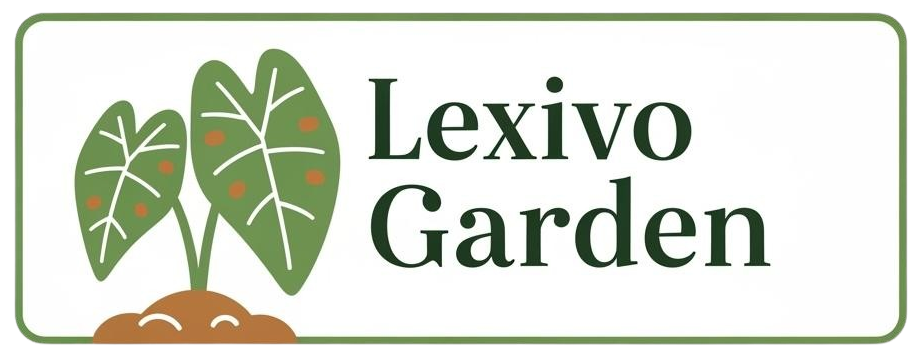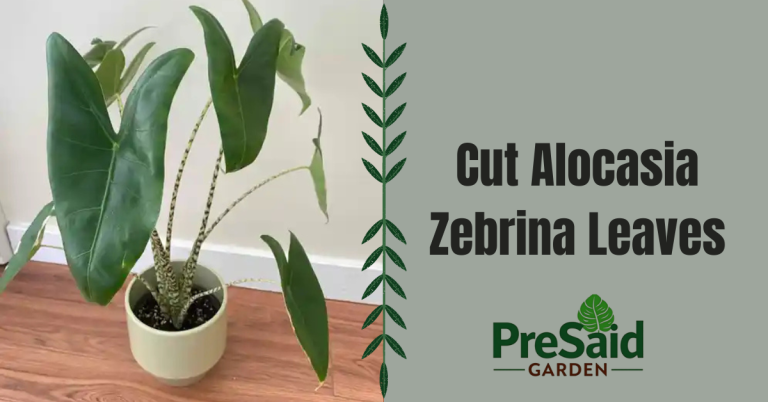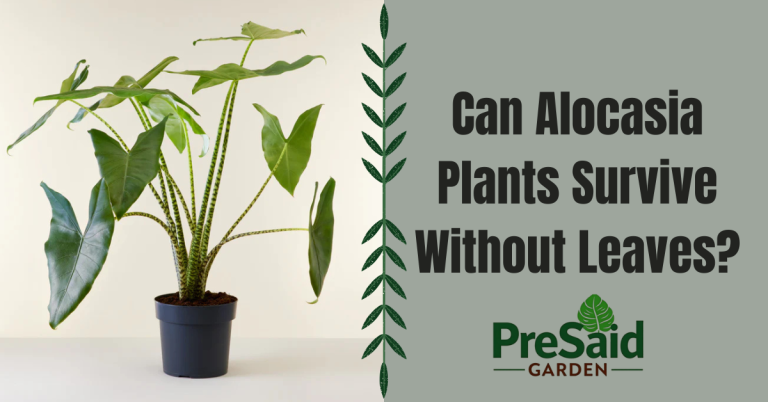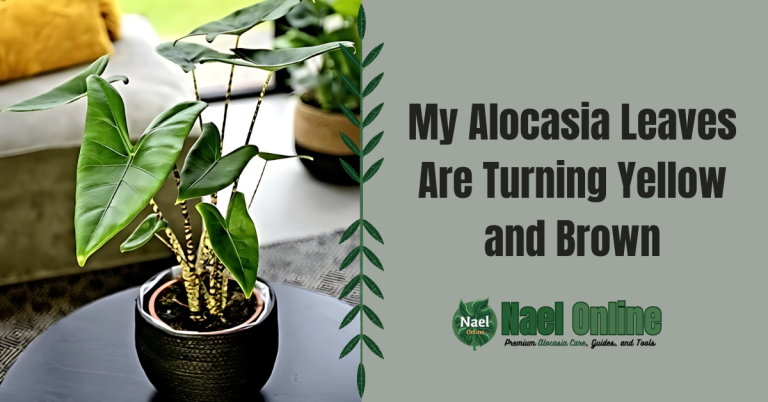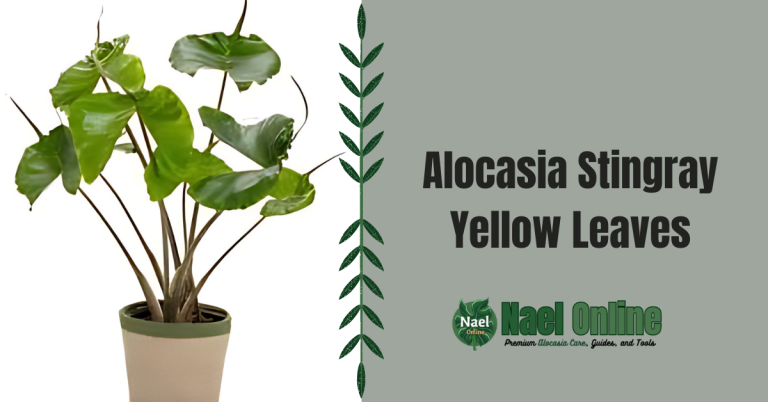Alocasia Brown Spots: Causes & Cures for Common Leaf Issues

Are you noticing brown spots on your alocasia leaves? Don’t panic! As someone who’s been growing these stunning tropical plants for over a decade, I’ve seen it all. Brown spots on alocasia leaves are a common issue, but with the right know-how, you can nurse your plant back to health. Let’s dive into the world of alocasia care and uncover the mysteries behind those pesky brown spots.
Why Your Alocasia Might Be Spotting
Alocasia plants are known for their large, dramatic leaves that can really make a statement in your home. But when those beautiful leaves start developing brown spots, it’s time to put on your plant detective hat. Here are some common reasons why you might be seeing alocasia brown spots on leaves:
1. Watering Woes
Inconsistent watering is often the culprit behind brown spots. Alocasias are moisture-loving plants, but they don’t appreciate sitting in waterlogged soil. Here’s what can happen:
- Overwatering: This can lead to root rot, which shows up as brown spots on leaves.
- Underwatering: Dry soil stresses the plant, causing leaf edges to brown and crisp up.
2. Sunburn Struggles
While alocasias love bright, indirect light, too much direct sun can scorch their leaves. If you’ve recently moved your plant to a sunnier spot, those brown spots might be sunburn.
3. Humidity Havoc
Low humidity can cause brown spots on alocasia leaves, especially on the edges and tips. These tropical beauties thrive in humid environments, so dry air can be a real problem.
4. Fertilizer Follies
Over-fertilizing can burn your alocasia’s roots, leading to brown spots on the leaves. It’s easy to get carried away trying to give your plant a boost, but sometimes less is more!
5. Pest Problems
Various pests, like spider mites or scale insects, can damage alocasia leaves, causing brown spots or discoloration.
How to Treat Alocasia Brown Spots on Leaves
Now that we’ve identified some potential causes, let’s talk solutions. Here’s how you can help your alocasia recover:
Adjust Your Watering Routine
Find the sweet spot between too wet and too dry. Water thoroughly when the top inch of soil feels dry, and make sure your pot has good drainage.
Optimize Light Exposure
Move your alocasia to a spot with bright, indirect light. If it’s getting direct sun, try filtering it through a sheer curtain.
Boost Humidity
Increase humidity around your plant by misting regularly, using a pebble tray, or running a humidifier nearby.
Fertilize Wisely
Use a balanced, water-soluble fertilizer at half strength during the growing season. Always follow the instructions on the package.
Check for Pests
Regularly inspect your alocasia for signs of pests. If you spot any unwanted critters, treat with neem oil or insecticidal soap.
Alocasia Care Guide: Keeping Your Plant Happy and Healthy

To help you keep track of your alocasia’s needs, here’s a handy care guide:
| Care Aspect | Recommendation |
|---|---|
| Light | Bright, indirect light |
| Water | Keep soil consistently moist but not waterlogged |
| Humidity | 60% or higher |
| Temperature | 60-80°F (15-27°C) |
| Soil | Well-draining, rich potting mix |
| Fertilizer | Balanced, water-soluble fertilizer monthly during growing season |
| Repotting | Every 1-2 years or when rootbound |
Remember, prevention is better than cure when it comes to alocasia brown spots on leaves. By following this care guide, you’ll be setting your plant up for success.
Beyond Brown Spots: Other Alocasia Leaf Issues
While we’re focusing on brown spots, it’s worth mentioning a few other leaf issues you might encounter:
Yellow Leaves
Yellowing leaves can be a sign of overwatering, nutrient deficiency, or natural aging. Check your watering habits and consider a gentle fertilizer if needed.
Drooping Leaves
Droopy leaves often indicate underwatering or low humidity. Give your plant a good drink and up the humidity if necessary.
Crispy Edges
If the edges of your alocasia’s leaves are turning brown and crispy, low humidity is likely the culprit. Time to break out that humidifier!
Alocasia Varieties: Different Plants, Similar Care
While we’ve been talking about alocasias in general, it’s worth noting that there are many different varieties, each with their own unique charm. Some popular types include:
- Alocasia Polly (African Mask Plant)
- Alocasia Amazonica
- Alocasia Zebrina
- Alocasia Macrorrhiza (Giant Taro)
While care requirements can vary slightly between varieties, the general principles we’ve discussed apply to most alocasias. If you’re curious about a specific variety, feel free to reach out for more tailored advice!
Tools of the Trade: Equipping Yourself for Alocasia Care
Taking care of alocasias (and addressing those pesky brown spots) is easier with the right tools. At Lexivo, we offer a range of high-quality plant care products that can help you keep your alocasia in tip-top shape. From perfectly sized plant pots to pruning shears for removing damaged leaves, we’ve got you covered. Check out our shop at https://lexivo.com.ng/shop/ for all your alocasia care needs!
Final Thoughts on Alocasia Brown Spots
Dealing with alocasia brown spots on leaves can be frustrating, but it’s all part of the plant parenthood journey. Remember, every brown spot is a learning opportunity – a chance to understand your plant better and improve your care routine.
With patience, attention, and the right care, your alocasia can bounce back from brown spots and continue to be the showstopper of your indoor jungle. And if you ever need advice or supplies, don’t hesitate to visit us at Lexivo. Happy growing!
